Discover 35 hidden attractions, cool sights, and unusual things to do in Leipzig (Germany). Don't miss out on these must-see attractions: Leipzig Zoological Garden, Völkerschlachtdenkmal, and St. Nicholas Church. Also, be sure to include St. Thomas Church in your itinerary.
Below, you can find the list of the most amazing places you should visit in Leipzig (Saxony).
Table of Contents
Leipzig Zoological Garden

Also known as: Zoo Leipzig
Established zoo with conservation focus. Leipzig Zoological Garden, or Leipzig Zoo is a zoo in Leipzig city, Germany. It was first opened on June 9, 1878. It was taken over by the city of Leipzig in 1920 after World War I and now covers about 27 hectares and contains approximately 850 species. By 2020 the zoo featured six different theme worlds, aiming at providing habitats appropriate for the species on display.
Leipzig zoo is internationally noted for its large building projects such as Pongoland (housing gorillas, chimpanzees, bonobo and orangutans) and Gondwanaland (world's second largest indoor rainforest hall at 1.65 ha or 4.1 acres). It has bred more than 2,000 lions, 250 rare Siberian tigers, and other carnivores like bears. Leipzig Zoological Garden has been called the "Zoo of the future". It is ranked as the best zoo in Germany and also the second-best in Europe (after Vienna).[1]
Address: Pfaffendorfer Str. 29, 04105 Leipzig (Mitte)
Völkerschlachtdenkmal
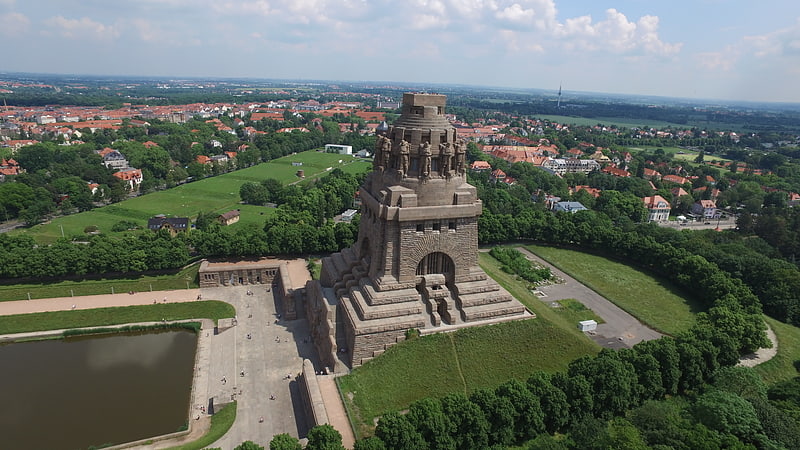
City views from a vast military memorial. The Monument to the Battle of the Nations is a monument in Leipzig, Germany, to the 1813 Battle of Leipzig, also known as the Battle of the Nations. Paid for mostly by donations and the city of Leipzig, it was completed in 1913 for the 100th anniversary of the battle at a cost of six million goldmarks.
The monument commemorates the defeat of Napoleon's French army at Leipzig, a crucial step towards the end of hostilities in the War of the Sixth Coalition. The coalition armies of Russia, Prussia, Austria and Sweden were led by Tsar Alexander I of Russia and Karl Philipp, Prince of Schwarzenberg. There were Germans fighting on both sides, as Napoleon's troops also included conscripted Germans from the left bank of the Rhine annexed by France, as well as troops from his German allies of the Confederation of the Rhine.
The structure is 91 metres (299 ft) tall. It contains over 500 steps to a viewing platform at the top, from which there are views across the city and environs. The structure makes extensive use of concrete, and the facings are of granite. It is widely regarded as one of the best examples of Wilhelmine architecture. The monument is said to stand on the spot of some of the bloodiest fighting, from where Napoleon ordered the retreat of his army. It was also the scene of fighting in World War II, when Nazi forces in Leipzig made their last stand against U.S. troops.[2]
Address: Strasse des 18. Oktober 100, 04299 Leipzig (Südost)
St. Nicholas Church
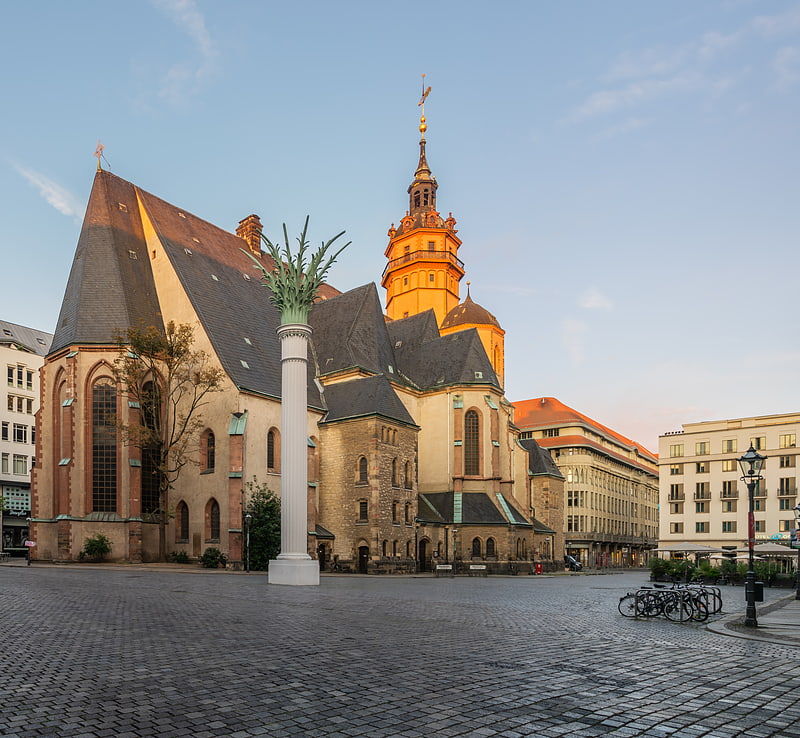
Also known as: Nikolaikirche
12th-century church in various styles. The St. Nicholas Church is one of the major churches of central Leipzig, Germany. Construction started in Romanesque style in 1165, but in the 16th century, the church was turned into a Gothic hall church. Baroque elements like the tower were added in the 18th century.
In the 18th century, several works by Johann Sebastian Bach, who was the music director of Nikolaikirche and of St. Thomas Church from 1723–50, premiered here. The Neoclassical interior dates to the late 18th century.
The church rose to national fame in 1989 with the Monday Demonstrations when it became the centre of peaceful revolt against communist rule. By capacity, it is one of the largest churches in Saxony.[3]
Address: Nikolaikirchhof 3, 04109 Leipzig (Mitte)
St. Thomas Church

Also known as: Thomaskirche
Choral concerts in a grand Gothic church. The St. Thomas Church is a Lutheran church in Leipzig, Germany. It is associated with several well-known composers such as Richard Wagner and Felix Mendelssohn Bartholdy, and especially Johann Sebastian Bach, who worked here as a Kapellmeister from 1723 until his death in 1750. Today, the church also holds his remains. Martin Luther preached here in 1539.
Although rebuilt over the centuries and damaged by Allied incendiary bombs in 1943, the church today mainly retains the character of a late-Gothic hall church. The Thomanerchor, the choir of the Thomaskirche, likely founded in 1212, remains a well-known boys' choir.[4]
Address: Thomaskirchhof 18, 04109 Leipzig (Mitte)
Gewandhaus
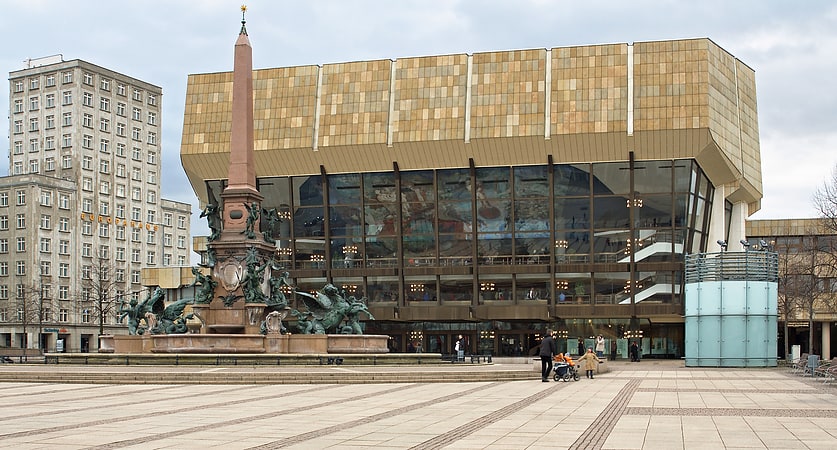
Concert hall in Leipzig, Germany. Gewandhaus is a concert hall in Leipzig, the home of the Leipzig Gewandhaus Orchestra. Today's hall is the third to bear this name; like the second, it is noted for its fine acoustics.[5]
Address: Augustusplatz 8, 04109 Leipzig (Mitte)
Leipzig Panometer
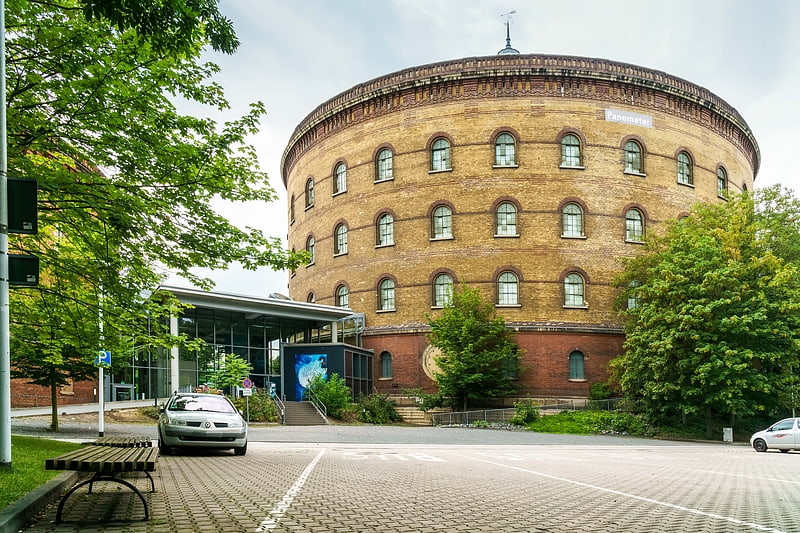
Also known as: Panometer Leipzig
Museum in Leipzig, Germany. The Leipzig Panometer is an attraction in Leipzig, Germany. It is a visual panorama displayed inside a former gasometer, accompanied by a thematic exhibition. The current theme is "Carolas Garten". The Panometer was created in 2003 by the Austrian-born artist Yadegar Asisi, who coined the name as a portmanteau of "panorama" and "gasometer". He opened another Panometer in Dresden in 2006. His panoramas are also displayed in Berlin, Pforzheim, Wittenberg, Hanover and Rouen.[6]
Address: Richard-Lehmann-Straße 114, 04275 Leipzig (Süd)
New Town Hall
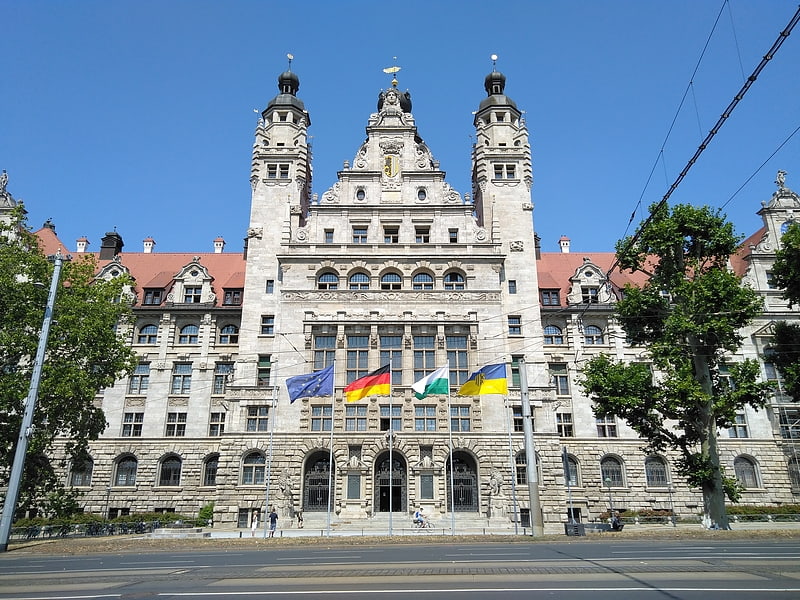
Also known as: Neues Rathaus
City or town hall in Leipzig, Germany. Leipzig New Town Hall is the seat of the Leipzig city administration since 1905. It stands within the Leipzig's "ring road" on the southwest corner opposite the city library at Martin-Luther-Ring. The main tower is, at 114.8 meters, the tallest city hall tower in Germany.[7]
Address: Martin-Luther-Ring 4, 04109 Leipzig (Mitte)
Hauptbahnhof
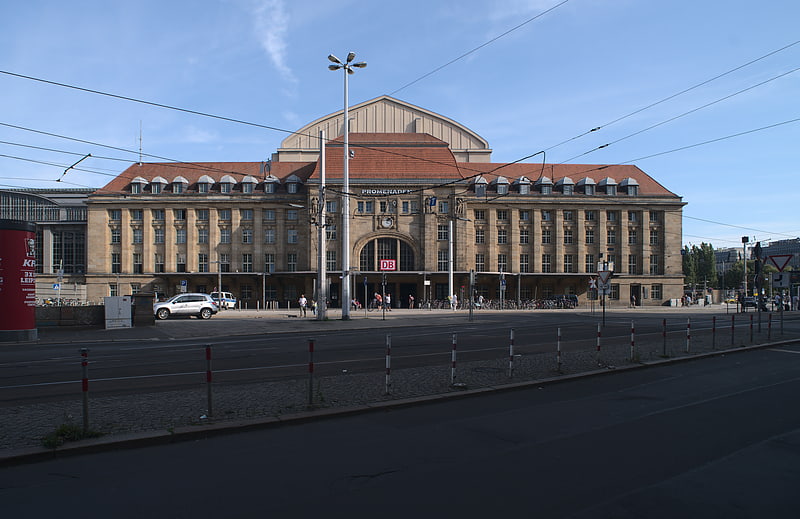
Railway station. Leipzig Hauptbahnhof is the central railway terminus in Leipzig, Germany. At 83,460 square metres, it is Europe's largest railway station measured by floor area. It has 19 overground platforms housed in six iron train sheds, a multi-level concourse with towering stone arches, and a 298 metres long facade. The two Leipzig City Tunnel platforms were inaugurated in December 2013.
The station is operated by DB Station&Service, a subsidiary of Deutsche Bahn, and is classified as a Category 1 station, one of twenty in Germany. It also functions as a large shopping centre. Train services are operated by Deutsche Bahn, S-Bahn Mitteldeutschland, Erfurter Bahn and Mitteldeutsche Regiobahn. As of 2008, Leipzig Hauptbahnhof handled an average of 120,000 passengers per day.
In 2021, Leipzig Hauptbahnhof was ranked the best railway station in Europe.[8]
Address: Leipzig, Willy-Brandt-Platz 5, Leipzig, Saxony
Mendelssohn House

Museum in Leipzig, Germany. Mendelssohn House is a museum in Leipzig in Saxony, Germany. The composer Felix Mendelssohn lived here from 1845 until his death in 1847; it now contains a collection about the life and work of the composer.[9]
Address: Goldschmidtstraße 12, 04103 Leipzig (Mitte)
St. Peter's Church
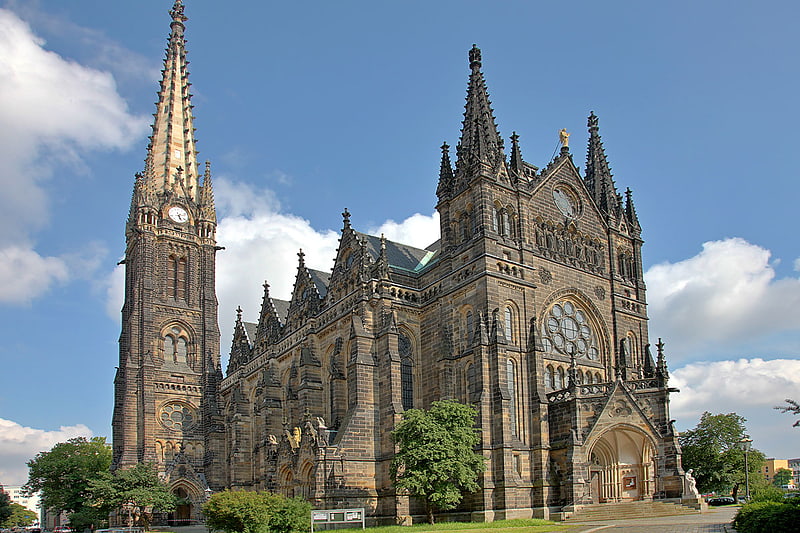
Also known as: Peterskirche
Evangelical church in Leipzig, Germany. Old St. Peter's Church is a Lutheran parish and church in the old town of Leipzig, Germany. The present church building, in Gothic Revival style, was erected from 1882 onwards at the Gaudigplatz, and also serves as a concert venue. It replaced a former building at a different location.
The former building was built in 1507. After the Reformation, it was used as a Lutheran church until 1539, and again from 1712 to 1885. It was demolished in 1886. With 87 metres (285 ft) it is Leipzig's tallest church.[10]
Address: Schletterstraße 5, 04107 Leipzig (Mitte)
Zeitgeschichtliches Forum
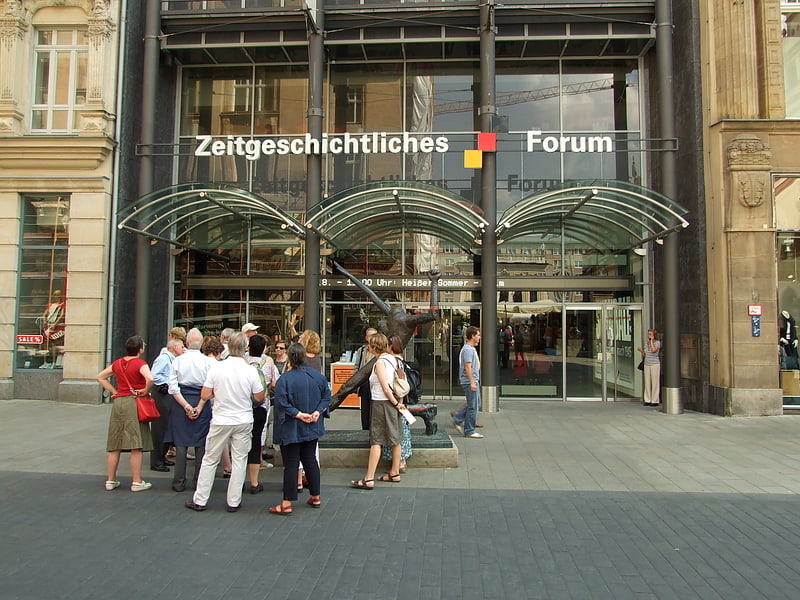
Museum in Leipzig, Germany. The Zeitgeschichtliches Forum Leipzig is a museum of contemporary German history. The museum was opened in 1999 and focuses on the history of the German division, everyday life in the communist dictatorship of the GDR, and the reunification process. It is located in the city center of Leipzig, Germany.
The permanent exhibition gives insight into the history of opposition and civil disobedience in the repressive one-party state of the Socialist Unity Party of Germany (SED). Furthermore, it focuses on the history of everyday life in the Soviet Occupation Zone and the GDR from the end of World War II in 1945 until the Peaceful Revolution of 1989 and German reunification. The fundamental revision of the permanent exhibition, completed in 2018, gives more space to the time period after the reunification. New topics are the successes and difficulties or growing together, international terrorism, digitization and globalization. 2000 objects, photos and films, as well as numerous interviews with eyewitnesses illustrate the recent history of Germany.
Alongside the permanent exhibition the museum displays several temporary exhibitions every year. Moreover, it organises lectures, readings, film screenings and other events on history. Its collection on GDR history comprises over 200,000 objects, for example the literary and artistic estate of Johannes Hegenbarth, author of GDR comic Mosaik. The museum is run by Haus der Geschichte foundation. Admission is free.[11]
Address: Grimmaische Str. 6, 04109 Leipzig (Mitte)
Stadtbad
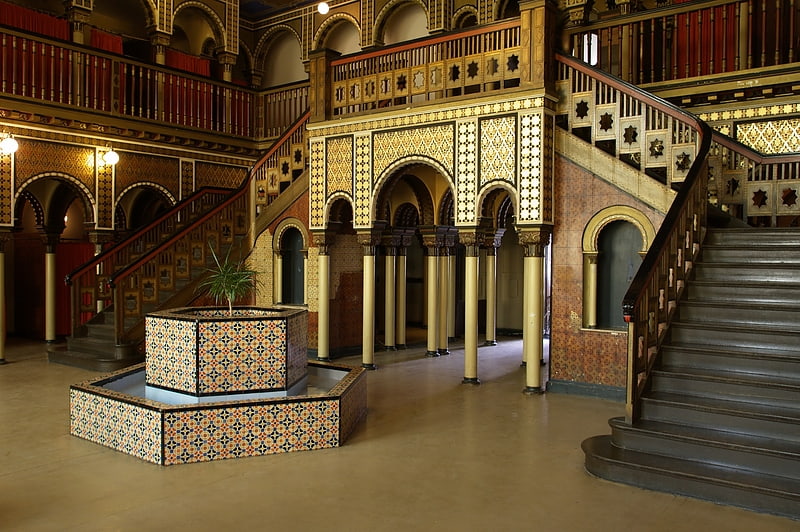
Watersports, Swimming, Swimming pool, Event space, Historical place
Address: Eutritzscher Str. 21, 04105 Leipzig (Mitte)
Museum der bildenden Künste
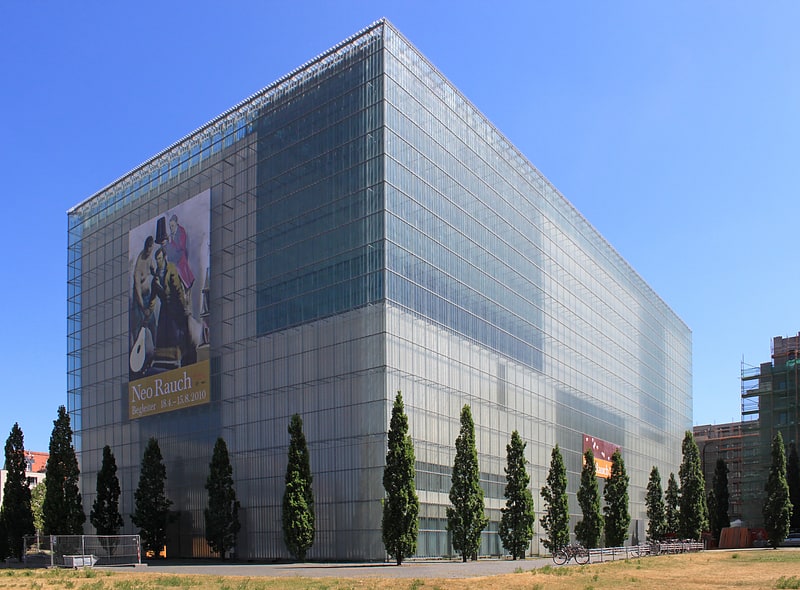
Museum in Leipzig, Germany. The Museum der bildenden Künste is a museum in Leipzig, Saxony, Germany. It covers artworks from the Late Middle Ages to Modernity.[12]
Address: Katharinenstraße 10, 04109 Leipzig (Mitte)
Musikalische Komödie

The Musikalische Komödie is an operettas and musicals theatre in Leipzig. Its venue is located in the Lindenau district in the Haus Dreilinden, which is often referred to as the "Musical Comedy" itself. It is one of the three sections of the Oper Leipzig. However, it has its own ensemble with soloists, choir, ballet company and orchestra. Because of this and its own venue, it is perceived by the public as an independent cultural institution. Its repertoire ranges from Spieloper to operetta and musicals.[13]
Address: Dreilindenstraße, Leipzig (Alt-West)
Schumann House
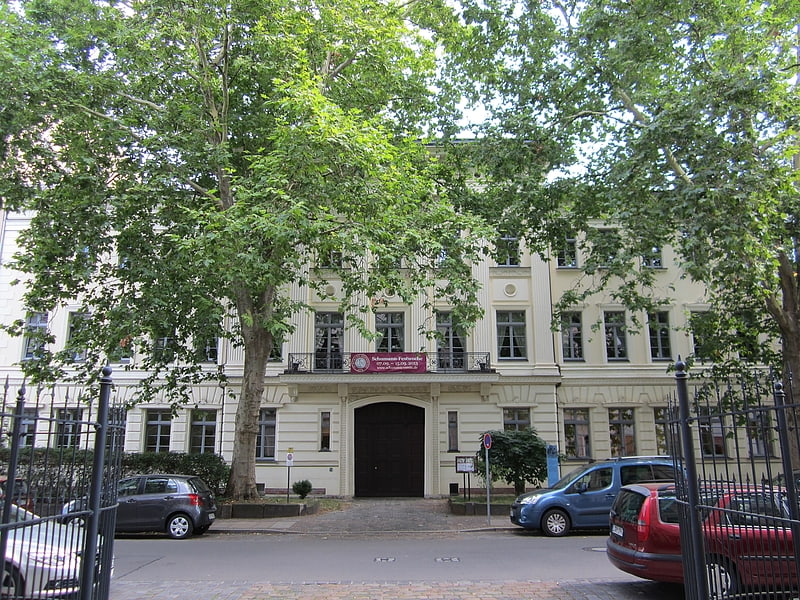
The Schumann House is a cultural site in Leipzig in Germany. The musicians Robert Schumann and his wife Clara lived here for their first four years of marriage; there are now exhibition rooms in their former apartment, about their life and work.[14]
Address: Inselstraße 18, 04103 Leipzig (Mitte)
Friedenspark
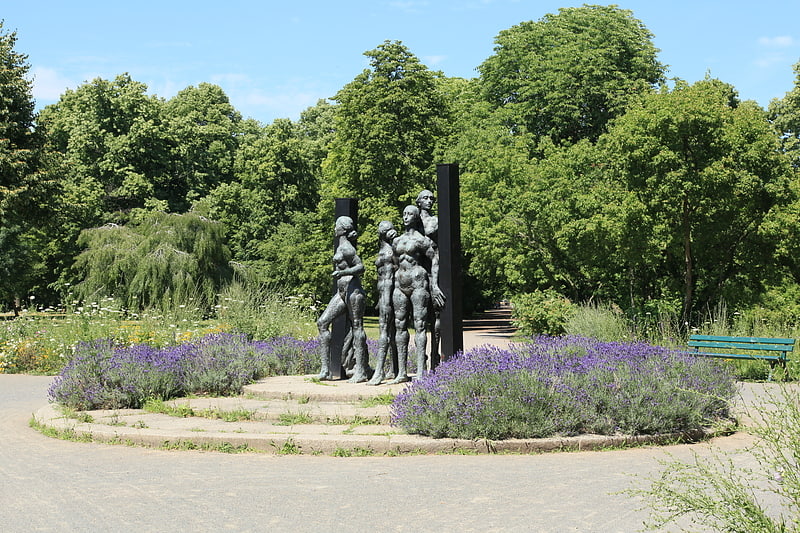
Park in Leipzig, Germany. The Friedenspark is an open space of about 20 hectares in the centre of Leipzig, in the district of Zentrum-Südost, located between the Ostplatz to the north and the Russian Memorial Church to the south. The park was opened in 1983, after the secularisation and clearance, under the then East German regime, of the Neuer Johannisfriedhof, which is what the space used to be, and its thorough reconstruction.[15]
Arena Leipzig
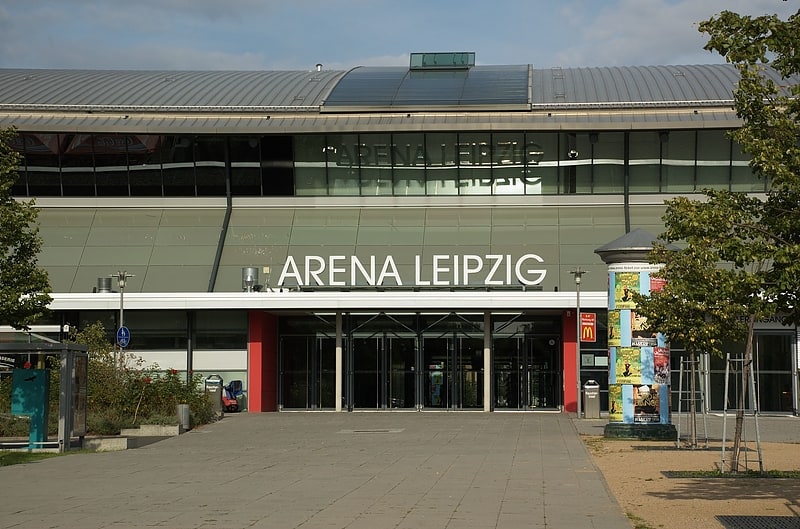
Arena in Leipzig, Germany. The Arena Leipzig is a multipurpose indoor arena located in Leipzig, Germany. The capacity of the arena is 8,000 people for sporting events and up to 12,200 for shows and concerts. It is part of the Sportforum Leipzig, which also contains the Leipzig Arena Stadium and the Sportmuseum Leipzig.[16]
Address: Am Sportforum 2, 04105 Leipzig (Mitte)
Augustusplatz

Tourist attraction in Leipzig, Germany. The Augustusplatz is a square located at the east end of the city centre of Leipzig. It is the city's largest square and one of the largest squares in Europe. It is also part of the city's inner-city ring-road and a central hub for its tram network.[17]
Schillerhaus
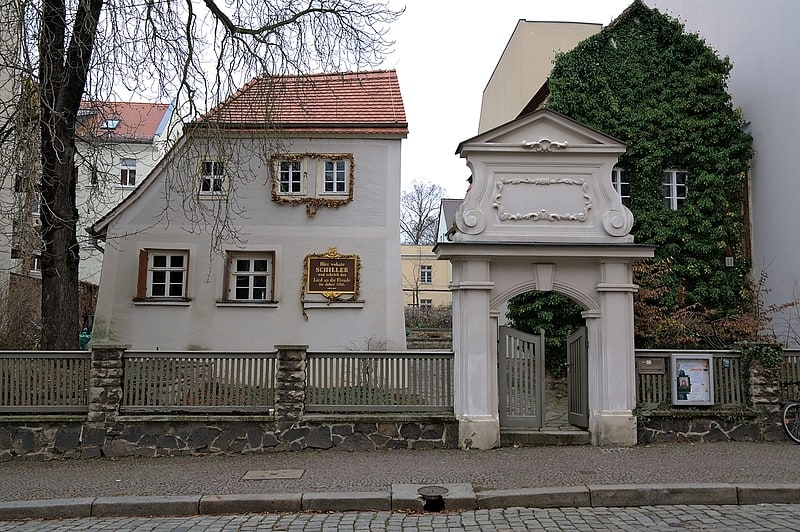
The Schillerhaus is a small former farmhouse in the Leipzig district of Gohlis. Friedrich Schiller lived on the upper floor of the house in the summer of 1785. He worked here on the 2nd act of Don Carlos, edited the Fiesco and wrote the first version of the poem "An die Freude", which he later completed in Dresden.
The building is the oldest preserved farmhouse in the Leipzig city area and a memorial that is a branch of the Leipzig City History Museum.[18]
Address: Menckestraße 42, 04155 Leipzig (Nord)
Leipzig Opera
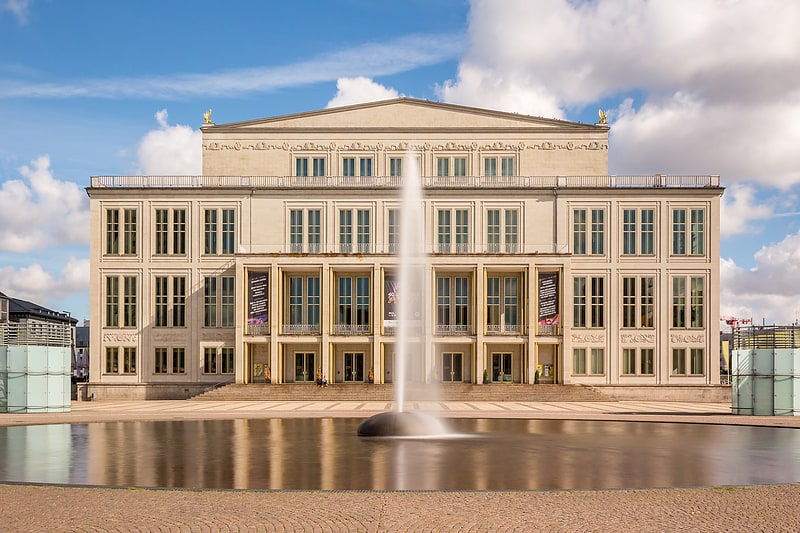
Also known as: Opernhaus Leipzig
Opera house in Leipzig, Germany. The Leipzig Opera is an opera house and opera company located at the Augustusplatz in Leipzig, Germany.[19]
Address: Augustusplatz 12, 04109 Leipzig (Mitte)
Grassimuseum
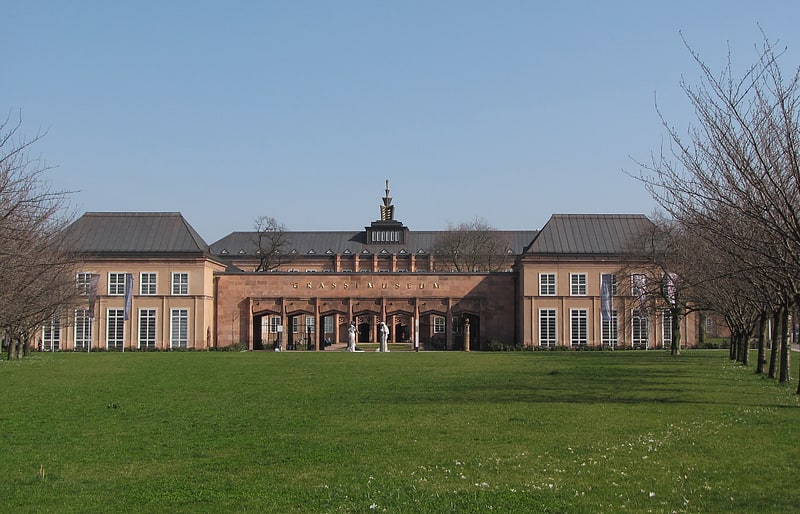
Museum. The Grassi Museum is a building complex in Leipzig, home to three museums: the Ethnography Museum, Musical Instruments Museum, and Applied Arts Museum.
It is sometimes known as the "Museums in the Grassi", or as the "New" Grassi Museum (to distinguish it from the older building with this name, now home to the municipal library).[20]
Address: Johannisplatz 5-11, 04103 Leipzig (Mitte)
Museum in der "Runden Ecke"
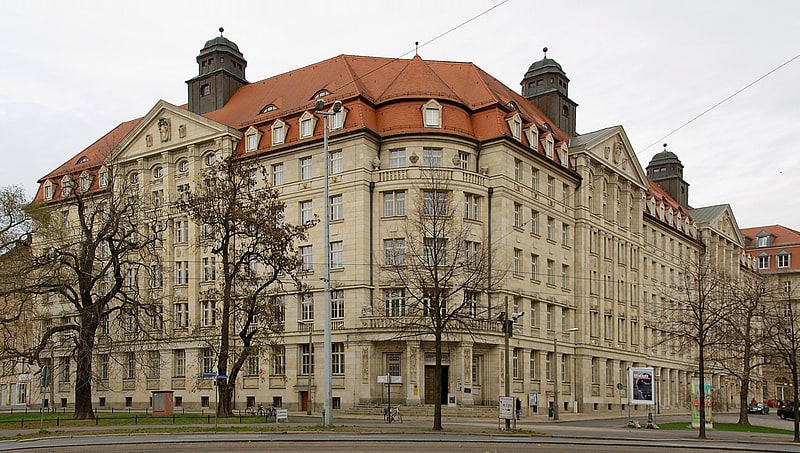
The Memorial Museum in the "Round Corner" is a museum about the history, structure and functioning of the Ministry for State Security in the GDR, located in the former headquarters of the District Administration for State Security on Dittrichring in Leipzig.
Address: Dittrichring 24, 04109 Leipzig (Mitte)
Propsteikirche St. Trinitatis
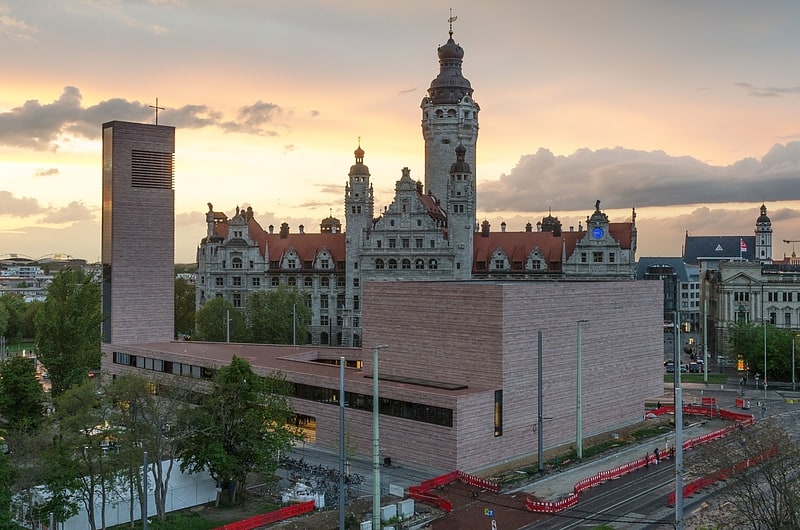
Catholic church in Leipzig, Germany. The Propsteikirche St. Trinitatis in Leipzig, Saxony, Germany, is a Catholic church in the city centre, opened in 2015. The parish is part of the deanery of Leipzig in the Diocese of Dresden-Meißen. The official name of the church is Propsteikirche St. Trinitatis Leipzig. It is the largest church built in the new states of Germany since reunification.
This is the third church to have been named Trinitatiskirche in Leipzig. The first was built in the centre in 1847, but was destroyed in World War II. The East German government permitted a new building to be erected, but only in a suburb. An "unremarkable functional building" was designed by the Bauakademie der DDR (‘Building Academy of the German Democratic Republic’) and completed in 1982. It showed severe structural deficiencies after a few years, due to problems with the foundations. The latest church returned the parish to the city centre, close to the location of the first church.
The architects Schulz und Schulz, who won a competition for the new building, were awarded a prize for the "Religious building of the year" at the World Architecture Festival 2016. The building complex is based on a triangle. In the east is the church, with an adjacent chapel and the sacristy. In the west are a large hall for the congregation and parish offices, with living quarters for priests and a guest apartment on an upper floor. A 50 m (164 ft) bell tower marks the western tip of the triangle.
The church window to the north was designed by Falk Haberkorn from Leipzig. It contains texts from the Old Testament and the New Testament, showing different sections depending on the lighting and time of day. The windows were manufactured by the Derix company.[21]
Address: Nonnenmühlgasse 2, 04107 Leipzig (Mitte)
Bruno-Plache-Stadion
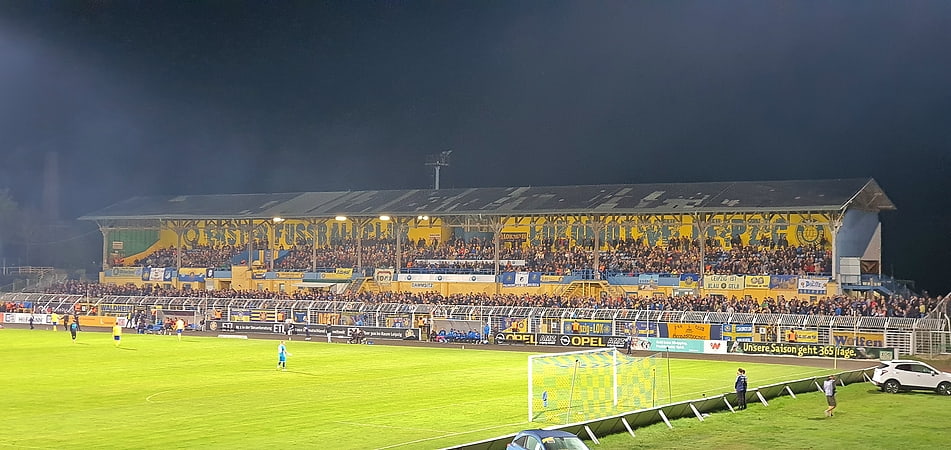
Stadium in Leipzig, Germany. Bruno-Plache-Stadion is a multi-use stadium in Leipzig, Germany. It is currently used mostly for football matches and is the home stadium of 1. FC Lokomotive Leipzig. Fans only call it "das Bruno". The stadium has a capacity of 15,600 people, but it is only accredited for 7,000 people at the moment.
It was opened in August 1922. When it was opened, it was the largest stadium owned by a club in Germany, with a proposed capacity of over 40,000 people. After the World War II, the stadium was home to SC Rotation Leipzig, until 1990. In 1992, the German Football Association prohibited games to be held for the 2. Fußball-Bundesliga due to security requirements not being met. Since 2004, football matches are being held again at the stadium, which is now the home ground of 1. FC Lokomotive Leipzig. The city of Leipzig has full ownership of the stadium.
On June 13, 1999, Bruce Springsteen and the E Street Band played a concert at the venue as part of their Reunion Tour.[22]
Leipzig Botanical Garden
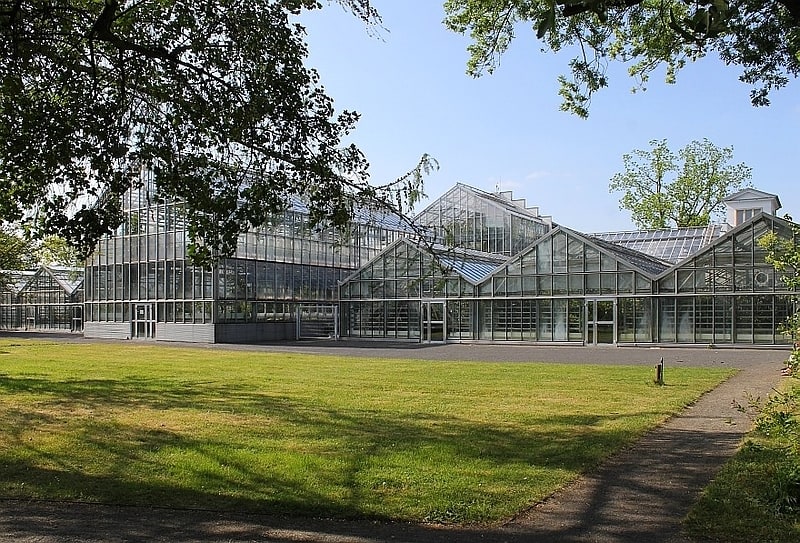
Also known as: Botanischer Garten der Universität Leipzig
Botanical garden focused on research. Leipzig Botanical Garden, is a botanical garden maintained by the University of Leipzig, and located at Linnéstraße 1, Leipzig, Saxony, Germany. It is the oldest botanical garden in Germany and among the oldest in the world, and open daily without charge.
Leipzig's botanical garden dates back to at least 1542, although the garden has moved several times. They were created shortly after the university's reform in 1539, when Maurice, Elector of Saxony donated the Dominican monastery of St. Pauli. Its former monastery garden, on the north side of the Paulinerkirche, was reworked as a hortus medicus by May 1543.
This first garden was destroyed in the Thirty Years' War, and in 1648 the university acquired a new site (now Grimmaische Street) where in 1653 it created its second garden. In 1807 the garden was moved to the grounds of the Pleißemühlgraben, where greenhouses were constructed after 1840. By 1857 the garden cultivated more than 10,000 species, of which 4,500 were grown in the greenhouses.
In 1876-1877, after the decision to erect a court house on its site, the garden was relocated once again to its present location southeast of Leipzig. The initial size of this new area (2.8 hectares) was extended in 1895, and the new greenhouses (1232 m²) were more than twice as large as those at the previous site. The garden was utterly destroyed in World War II, with the ruins of the Botanical Institute subsequently demolished and backfilled with rubble. By 1954 the show houses had been restored, but economic difficulties in the 1980s led to closure of some greenhouses. After reunification, the garden was completely renovated (1992-2004), with a new butterfly house created in 1996 and five new greenhouses built in 1999-2000.
Today the garden contains a total of some 7,000 species, of which nearly 3,000 species comprise ten special collections. The garden contains a systematic department, as well as geographic arrangements of plants from the steppes of Eastern Europe and Asia, forests of the northern hemisphere, prairies, and eastern North America, as well as a marsh and pond with regional flora and an alpine garden containing plants from Asia, Europe, and South America. Its greenhouses (2,400 m² total area) contain plants from subtropical and tropical zones of the Mediterranean region, Africa, Central America, and Australia.[23]
Address: Linnestr. 1, 04103 Leipzig (Mitte)
Leipzig Museum of Applied Arts

Also known as: Grassi Museum für Angewandte Kunst
Museum in Leipzig, Germany. The Museum of Applied Arts is a museum in Leipzig, Germany. It is the second oldest museum of decorative arts in the country, founded just six years after the Kunstgewerbemuseum Berlin. Today it is part of the Grassi Museum, an institution which also includes the Museum of Ethnography and the Museum of Musical Instruments, based in a large building on the Johannisplatz.[24]
Address: Johannisplatz 5-11, 04103 Leipzig (Mitte)
Südfriedhof

Cemetery in Leipzig, Germany. Südfriedhof is, with an area of 82 hectares, the largest cemetery in Leipzig. It is located in the south of Leipzig in the immediate vicinity of the Völkerschlachtdenkmal. The Südfriedhof is, along with the Ohlsdorf Cemetery in Hamburg and the Südwestkirchfriedhof Stahnsdorf in Berlin, the largest park-like cemetery in Germany.[25]
Address: Friedhofsweg 3, 04299 Leipzig (Südost)
Moritzbastei

Event venue in Leipzig, Germany. The Moritzbastei is the only remaining part of the ancient town fortifications of Leipzig. Today it is widely known as a cultural centre.[26]
Address: Universitätsstr. 9, 04109 Leipzig (Mitte)
Leipzig Museum of Ethnography
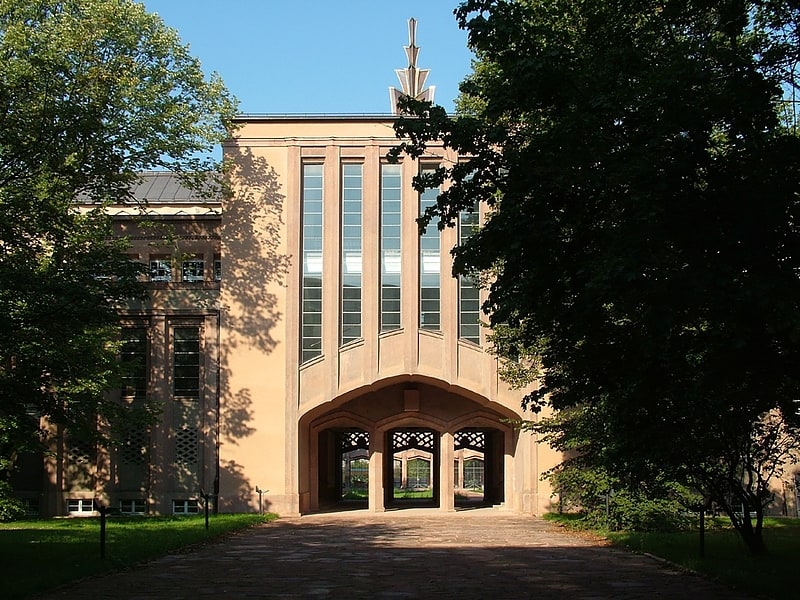
Also known as: Museum für Völkerkunde zu Leipzig
Museum. The Leipzig Museum of Ethnography is a large ethnographic museum in Leipzig, Germany, also known as the Grassi Museum of Ethnology. Today it is part of the Grassi Museum, an institution which also includes the Museum of Applied Arts and the Museum of Musical Instruments, based in a large building on the Johannisplatz.
The Leipzig Museum of Ethnography is one of three museums in the Saxon State Ethnographical Collections which belong to the Dresden State Art Collections.[27]
Address: Täubchenweg 2, 04103 Leipzig (Mitte)
Halloren
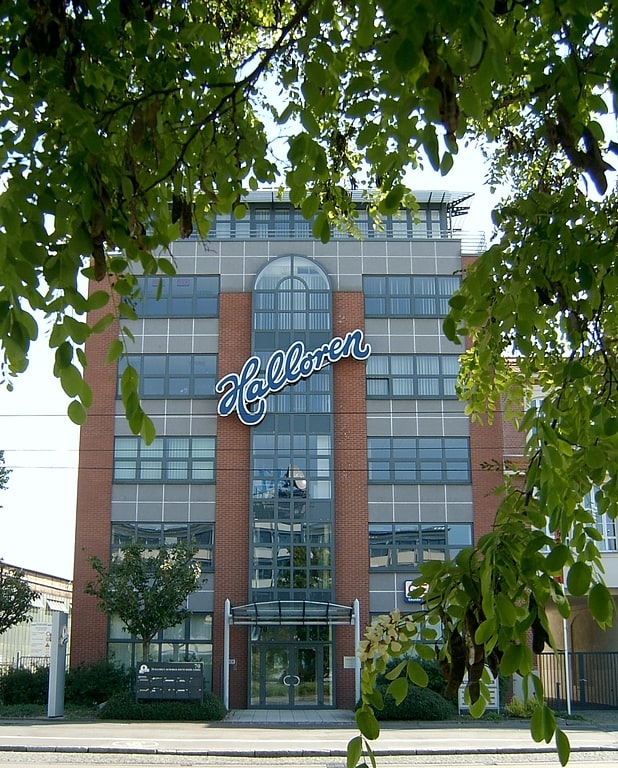
Company. The Halloren Chocolate Factory is the oldest German chocolate factory. The first mention of the firm dates back to 1804. The firm was founded in Halle, Saxony-Anhalt where its headquarters are today. In 1851 the company was named Friedrich David & Söhne. In the year 1905 the company was transformed into a shareholder company; thus the company name being altered to David Söhne AG accordingly. Another name change in 1933 made it Mignon Schokoladenwerke AG and since 1952 it is known by its current name Halloren.
Its most famous products are the "Halloren-Kugeln", or Halloren globes, which receive their name from the early salt workers, the "Halloren", whose festive dress has ball-shaped buttons which the chocolates resemble. The brand was especially popular in the former German Democratic Republic and remained popular after reunification.
In 2013, the company secured a majority share in the Belgian chocolate producer Bouchard.
The factory also features the Halloren Schokoladenmuseum (Halloren Chocolate Museum), which includes exhibits about the history of chocolate, chocolate making equipment, molds, and a view of the factory process.[28]
Address: 1 Willy-Brandt-Platz, Leipzig (Mitte)
Fockeberg

Schuttberg in Germany. Fockeberg is a Schuttberg in the south of Leipzig Saxony, southeastern Germany, and is actually a pile of rubble left over from the bombing during World War II.[29]
Bach Archive
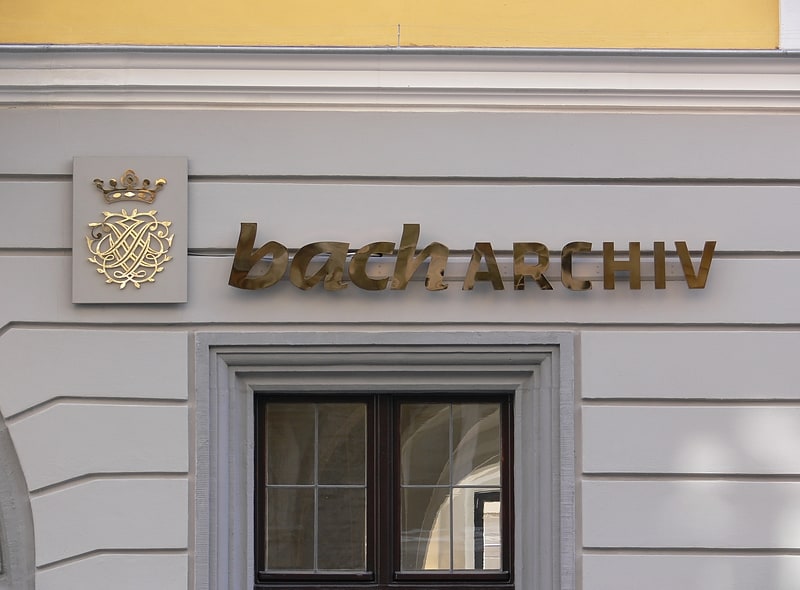
Also known as: Bach-Archiv Leipzig
Archive in Leipzig, Germany. The Bach-Archiv Leipzig or Bach-Archiv is an institution for the documentation and research of the life and work of Johann Sebastian Bach. The Bach-Archiv also researches the Bach family, especially their music. Based in Leipzig, the city where Bach lived from 1723 until his death, the Archiv is recognised by the German government as a "cultural beacon" of national importance. Since 2008 the Bach-Archiv has been part of the University of Leipzig.[30]
Address: Thomaskirchhof 15/16, 04109 Leipzig (Mitte)
Natural History Museum

Also known as: Naturkundemuseum
Museum in Leipzig, Germany. The Natural History Museum in Leipzig is a natural history museum in the city of Leipzig, Germany. The museum contains the insect collection of Alexander Julius Reichert.[31]
Address: Lortzingstraße 3, 04105 Leipzig (Mitte)
Museum of Antiquities of Leipzig University
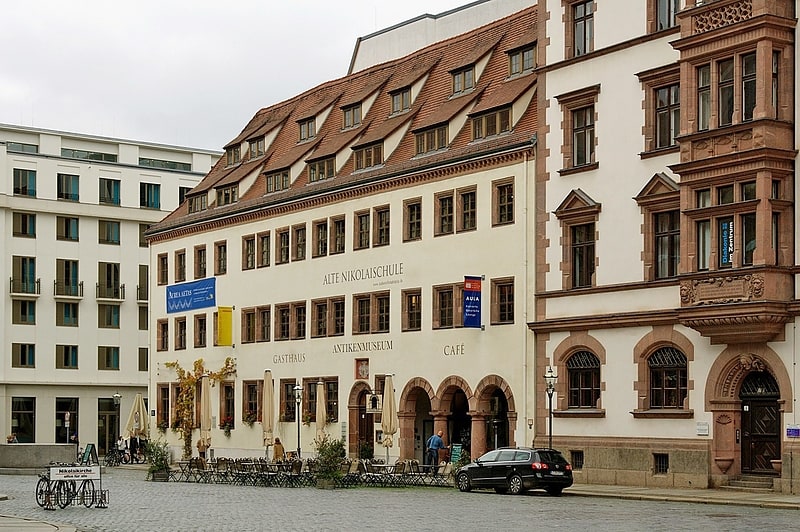
Also known as: Antikenmuseum der Universität Leipzig
Museum in Leipzig, Germany. The Museum of Antiquities of the University of Leipzig is a collection of antiquities in Leipzig, Germany.[32]
Address: Ritterstr. 14, 04109 Leipzig (Mitte)
Conne Island
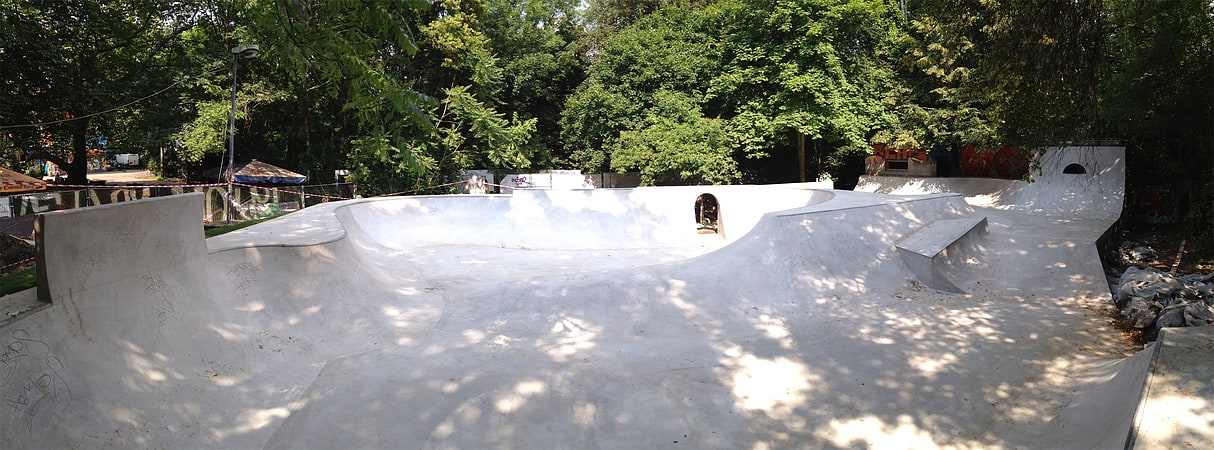
Concert hall in Leipzig, Germany. Conne Island is a music venue and self-managed social centre in the Connewitz district of Leipzig, Germany. Conne Island is a stronghold and well-known meeting point for the radical left. Outside, there is a large skate park.[33]
Address: Koburger Str. 3, 04277 Leipzig (Süd)